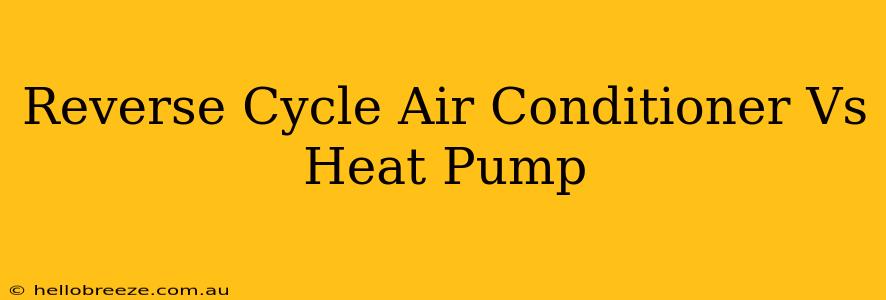Choosing the right heating and cooling system for your home can be a daunting task. Two popular options often leave homeowners confused: reverse cycle air conditioners and heat pumps. While they share similarities, key differences exist that impact efficiency, cost, and suitability for your climate. This comprehensive guide will clarify the distinctions between reverse cycle air conditioners and heat pumps, helping you make an informed decision.
Understanding the Fundamentals
Both reverse cycle air conditioners and heat pumps utilize a refrigeration cycle to transfer heat. This means they can both heat and cool your home, making them versatile options for year-round climate control. The core difference lies in their primary function and design features.
Reverse Cycle Air Conditioners: Primarily for Cooling
A reverse cycle air conditioner is primarily designed for cooling. While it possesses heating capabilities, this function is often secondary. Its heating performance might be less efficient compared to dedicated heat pumps, particularly in extremely cold climates. Think of it as an air conditioner with a built-in, albeit potentially less robust, heating system.
Heat Pumps: Designed for Both Heating and Cooling
A heat pump, on the other hand, is engineered for both heating and cooling with equal emphasis. It's optimized to provide efficient heating even in lower temperatures, making it a more suitable choice in colder regions. Heat pumps are designed to extract heat from the outside air, even when the temperature is below freezing, and transfer it indoors.
Key Differences: A Comparative Table
| Feature | Reverse Cycle Air Conditioner | Heat Pump |
|---|---|---|
| Primary Function | Cooling | Heating & Cooling |
| Heating Efficiency | Lower in colder climates | Higher, even in colder climates |
| Running Costs | Potentially higher in winter | Generally lower, especially in winter |
| Initial Cost | Typically lower | Typically higher |
| Suitable Climate | Mild to moderate climates | Wide range of climates, including colder ones |
Efficiency and Running Costs: A Crucial Factor
The biggest difference lies in efficiency and running costs. Heat pumps, particularly those with advanced features like inverter technology, are often far more efficient at heating than reverse cycle air conditioners, especially in colder temperatures. This translates to lower electricity bills over the long term. Reverse cycle air conditioners can become less effective and more expensive to run when used for heating in colder climates, relying more heavily on electrical resistance heating (which is less efficient).
Choosing the Right System for Your Needs
The best choice depends heavily on your climate and priorities:
-
Mild climates (with infrequent, mild winters): A reverse cycle air conditioner might be sufficient and more cost-effective initially. Its cooling capabilities are usually comparable to heat pumps.
-
Colder climates (with frequent, cold winters): A heat pump is the superior choice, offering better heating efficiency and lower long-term running costs. The initial higher investment pays off over time through energy savings.
Beyond the Basics: Inverter Technology
Both reverse cycle air conditioners and heat pumps can incorporate inverter technology. This technology allows the unit to modulate its output, providing more precise temperature control and increased efficiency compared to non-inverter models. Inverter technology enhances both heating and cooling performance in both system types.
Conclusion: Making the Right Choice
Understanding the nuances between reverse cycle air conditioners and heat pumps is crucial for making an informed decision. Consider your climate, budget, and long-term energy costs when choosing the optimal system for your home. Consult with a qualified HVAC professional to assess your specific needs and determine the best solution for your comfort and energy efficiency. They can help you navigate the complexities and select the most appropriate system for your individual circumstances.

